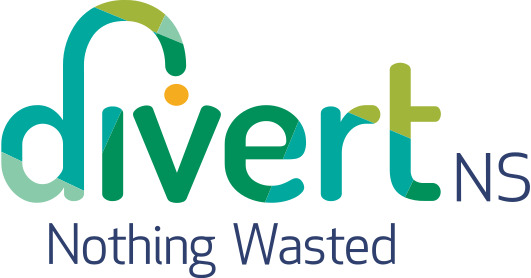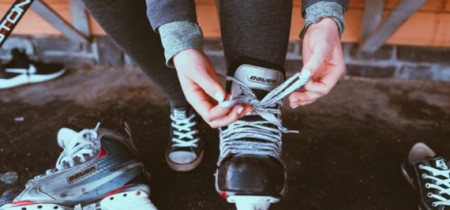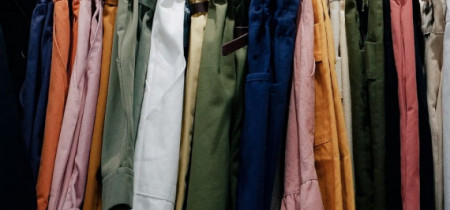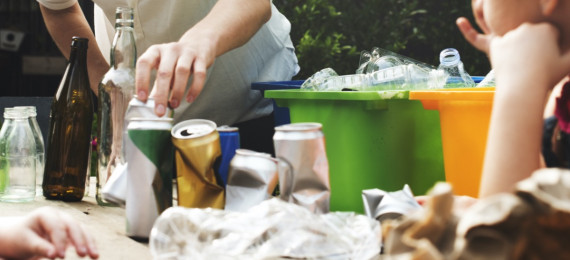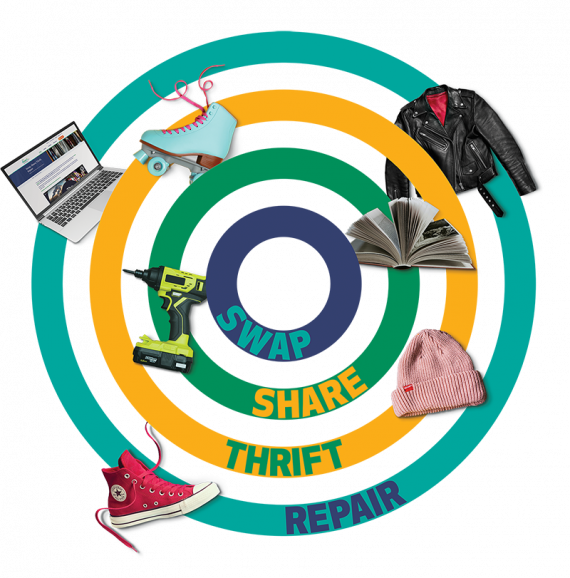
The Shape of the Future is Circular
Can you imagine a world where nothing goes to waste? In a circular economy, materials are designed to be reused or repurposed rather than disposed of. Swapping, sharing, thrifting, and repairing items, rather than buying new, are easy ways to reduce waste, reduce greenhouse gas emissions, save money, support your local community, and contribute to the circular economy.
Extending the life of an item is easier than it may seem! Visit local thrift shops and libraries, attend a repair workshop, watch our textile repair tutorial video, or check out your municipality’s loaning programs.
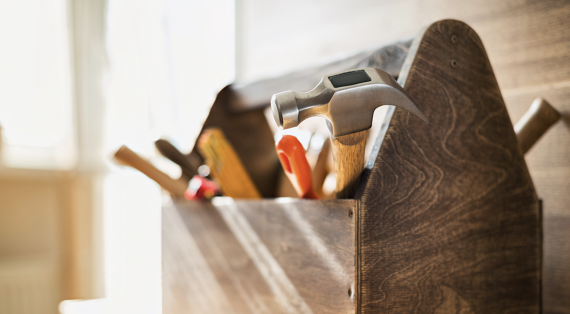
Putting Circular Economy into Action
Repair
Did you know that in 2022, Nova Scotians sent over 400kg of waste per person to the landfill? Repairing is a great way to reduce the amount of waste sent to the landfill and contribute to the circular economy. A circular economy aims to eliminate waste by keeping resources in use for as long as possible.
When something breaks, replacing it might seem like the best option. However, purchasing a new item to replace an almost functional one has become too common—and our landfills are filling up fast. Often, a simple repair can extend the life of an object and eliminate the need to buy brand new. There are many resources for minor repairs, such as video tutorials, workshops, repair cafes, and local repair businesses. Repairing also presents knowledge-sharing and mentorship opportunities, which can strengthen our local communities.
Swap, Thrift, Share, Repeat
Every object has an interesting story, let’s make sure it’s a long one.
